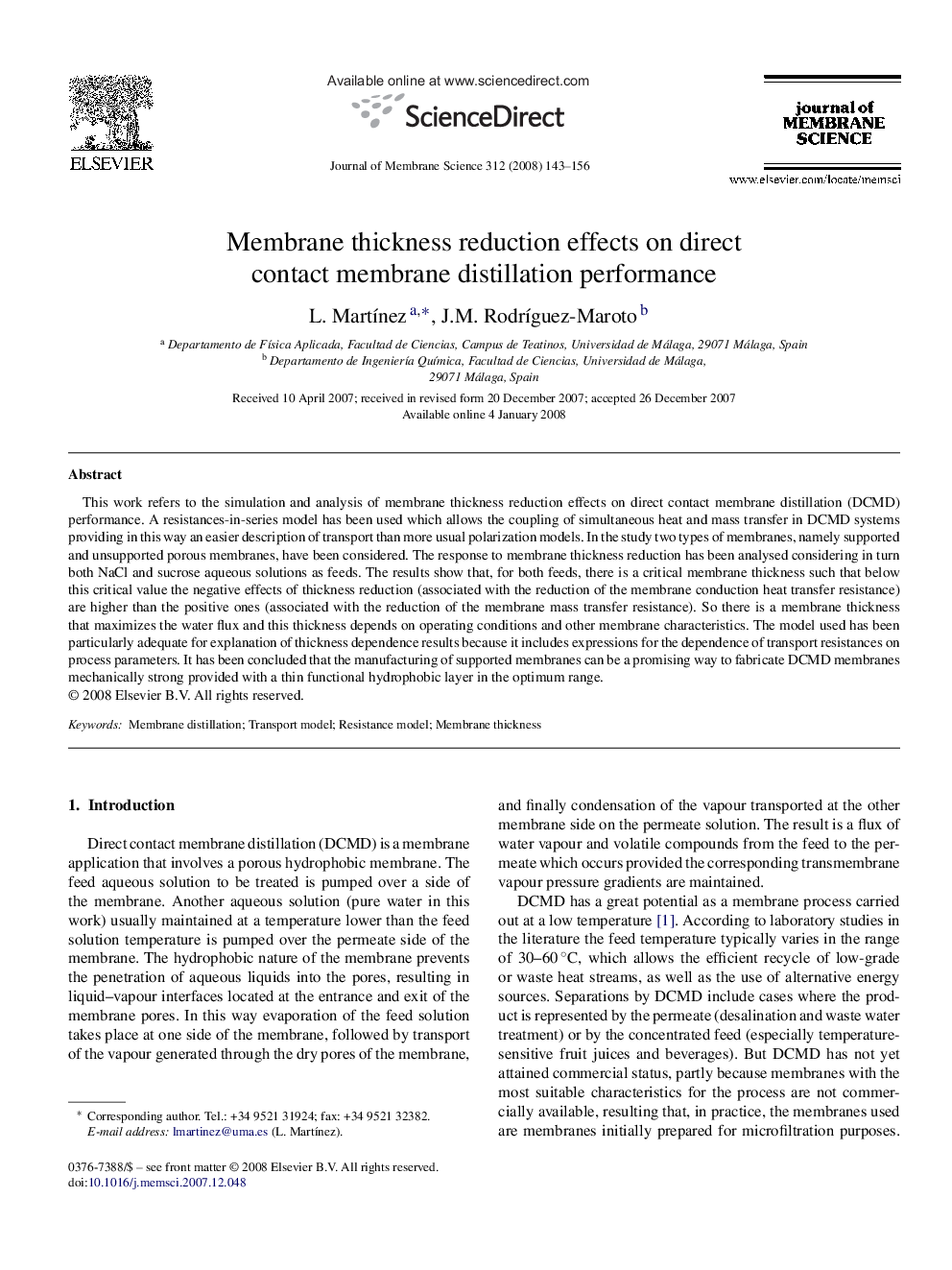| Article ID | Journal | Published Year | Pages | File Type |
|---|---|---|---|---|
| 638201 | Journal of Membrane Science | 2008 | 14 Pages |
This work refers to the simulation and analysis of membrane thickness reduction effects on direct contact membrane distillation (DCMD) performance. A resistances-in-series model has been used which allows the coupling of simultaneous heat and mass transfer in DCMD systems providing in this way an easier description of transport than more usual polarization models. In the study two types of membranes, namely supported and unsupported porous membranes, have been considered. The response to membrane thickness reduction has been analysed considering in turn both NaCl and sucrose aqueous solutions as feeds. The results show that, for both feeds, there is a critical membrane thickness such that below this critical value the negative effects of thickness reduction (associated with the reduction of the membrane conduction heat transfer resistance) are higher than the positive ones (associated with the reduction of the membrane mass transfer resistance). So there is a membrane thickness that maximizes the water flux and this thickness depends on operating conditions and other membrane characteristics. The model used has been particularly adequate for explanation of thickness dependence results because it includes expressions for the dependence of transport resistances on process parameters. It has been concluded that the manufacturing of supported membranes can be a promising way to fabricate DCMD membranes mechanically strong provided with a thin functional hydrophobic layer in the optimum range.
